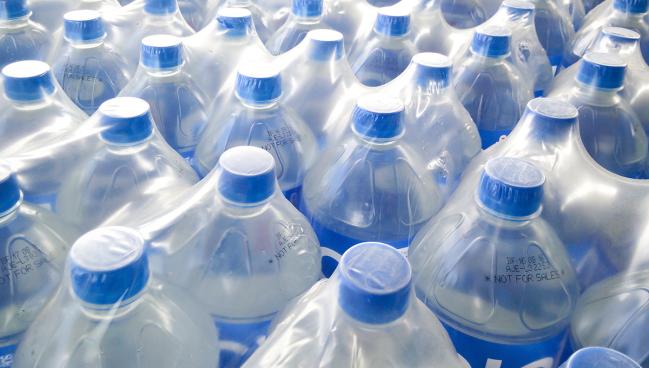Plastic Debris Found in Carotid Plaque Linked to More Adverse CV Events
The study does not prove causation, but sets the stage for better understanding of plastics and human health, says Robert Brook.

Among patients undergoing carotid endarterectomy (CEA), those with evidence of micro- or nanoplastics had roughly a 4.5-fold increased risk of MI, stroke, or all-cause death over nearly 3 years of follow-up, report Raffaele Marfella, MD, PhD (University of Campania, Naples, Italy), and colleagues in the New England Journal of Medicine.
The particles can be both inhaled and ingested from a variety of sources and get into the circulatory system and tissue, with their study suggesting that nanoplastics, in particular, may gravitate to sites of atherosclerosis. Other studies, they add, have shown evidence of plastic particulates in the liver, placenta, breast milk, urine, and blood.
Marfella and colleagues compared where patients lived but did not see any obvious differences that might account for why some had plastics in their plaque while others did not. “Similarly, we cannot establish why only polyethylene and polyvinyl chloride, among the 11 types of plastics assessed, were detected,” they write.
In an accompanying editorial, Philip J. Landrigan, MD (Boston College, MA), notes that plastics used every day by consumers contain thousands of chemical additives, many of which are toxic, including “carcinogens, neurotoxicants, and endocrine disruptors such as bisphenols and perfluorinated and polyfluorinated substances that can disrupt lipid metabolism and increase the risk of diabetes, cardiovascular disease, and stroke.”
Landrigan adds that finding a solution to the hazards posed by plastics “will require a wide-scale transition away from fossil carbon.”
It will be important to know what the sources are of the plastics. . . . And whatever it is, can we mitigate it and will that translate to improved health benefits that are meaningful? Robert D. Brook
While the study cannot prove causation, Robert D. Brook, MD (Wayne Health and Wayne State University, Detroit, MI), told TCTMD that it nevertheless represents a landmark discovery. “They build a very good story [because] not only did they observe very clear multiple avenues of evidence of nano/microplastics within atherosclerotic plaques, but [also] the plaques that contained the plastics were, by traditional measures, more vulnerable, more inflamed,” he said.
Sadeer Al-Kindi, MD (Houston Methodist DeBakey Heart & Vascular Center, TX), also commenting for TCTMD, said the study elevates evidence from air pollution research showing associations between small particulate matter exposure and CV risk.
“If we were to learn some lessons from air pollution, the fact is these environmental pollutants do actually work through some other risk factors. The impact of air pollution on heart disease is partially mediated through elevated blood pressures and partly through diabetes. In other words, if traditional risk factors are impacted by those environmental factors, then plastics might be in the same arena,” he said.
In addition to not proving causation, the study can’t offer tips for reducing the health risks of plastics. “We don't know the sources, and without knowing, we don't know to what degree we should reduce our use of plastics,” Al-Kindi added.
Visible, Jagged-Edged Particles
For the study, Marfella and colleagues examined carotid plaque from 257 patients (mean age 72 years; 25% female) undergoing CEA and enrolled in the North American Symptomatic Carotid Endarterectomy Trial (NASCET). More than half of patients had hypertension, one-third had CVD, and nearly all were on statins and antiplatelets.
In all, 58.4% of patients had a detectable amount of polyethylene in excised carotid plaque (mean 21.7 μg/mg), with 12.1% also having a measurable amount of polyvinyl chloride present (5.2 μg/mg) found by pyrolysis-gas chromatography-mass spectrometry and corroborated by electron microscopy and stable isotope analysis.
At a mean of 33.7 months, the composite primary endpoint of nonfatal MI, nonfatal stroke, or death from any cause occurred in 20% of patients with evidence of microplastics or nanoplastics in plaque versus 7.5% of those without such evidence. According to Marfella and colleagues, on electron microscopy they saw “visible, jagged-edged foreign particles among plaque macrophages and scattered in the external debris.”
In multivariable analysis that included adjustment for age, sex, body mass index, cholesterol, comorbidities, and prior CV events, the primary endpoint was greater in those with versus without evidence of plastic in plaque (HR 4.53; 95% CI 2.00-10.27).
The investigators caution that they cannot rule out contamination of samples, although they did take efforts to use various preventive methods in their analysis. They also did not have socioeconomic data for the study population or information on income and education that might be relevant to CV risk.
What Do We Do About It?
In his editorial, Landrigan advises physicians to encourage patients to “reduce their use of plastics, especially unnecessary single-use items.” Institutions, he says, should keep track of their use of plastics and identify areas for reduction.
To TCTMD, Brook said the most interesting question for him relates to the people in the study who had no plastics in their plaque and what could possibly make them different given the ubiquity of plastic.
“Is something biologically different about those patients that make them less susceptible? It seems hard to believe that. Is it something in their behavior where they're exposed to such a lower level [of plastics] that it couldn't be detected? That seems more plausible, but how? I think this is a very important area of follow-up,” he noted. “Again, it will be important to know what the sources are of the plastics. Is it PVC piping in homes? Is it plastic water bottles? And whatever it is, can we mitigate it and will that translate to improved health benefits that are meaningful? We just don’t know.”
Marfella and colleagues say the link between micro- and nanoplastics and the incidence of adverse CV events and death “may also entail the risk from exposure to other residual, unmeasured confounding variables, such as unknown exposures during the life course of the patient or, more broadly, the health status and behaviors of the patients.” They also do not know about exposures to fine particulate matter in air pollution, which is increasingly being recognized as an important risk factor for CVD.
We're realizing that there's more that we don't know than we do know in terms of environmental impact on health. Sadeer Al-Kindi
Both Brook and Al-Kindi said that, based on the small size of the study, they suspect the hazard ratio based on the presence of plastics alone may be overinflated.
“I think there’s something else contributing to it,” Al-Kindi said. “These exposures might be related to other things, including socioeconomic status, including the area where the patients reside. We're realizing that there's more that we don't know than we do know in terms of environmental impact on health.”
Brook said plastics should now become a higher research priority. “Even if it's a 30% increased risk, given the ubiquity and its omnipresent nature, [plastics are] a pervasive societal risk that need to be investigated further and reduced and mitigated as much as possible,” he noted. “What I think we will see over the next few years is larger epidemiologic studies that may confirm that exposure to plastic, or the presence of plastic in blood or the body, is associated with cardiovascular events in many, many thousands or tens of thousands of patients.”
Such studies, he continued, “will extend and corroborate these findings. Then, like with other pollutants, we can determine if there are viable pathways where someone can actually reduce exposure, and does the reverse occur where reduced exposures translate to reduce risks. That's when you can start to put this all together and say that truly there is a signal for causation here and take steps to move forward.”
L.A. McKeown is a Senior Medical Journalist for TCTMD, the Section Editor of CV Team Forum, and Senior Medical…
Read Full BioSources
Marfella R, Prattichizzo F, Sardu C, et al. Microplastics and nanoplastics in atheromas and cardiovascular events. N Engl J Med. 2024;390:900-910.
Landrigan PJ. Plastics, fossil carbon, and the heart. N Engl J Med. 2024;390:948-950.
Disclosures
- Brook and Al-Kindi report no relevant conflicts of interest.





Roger Kuhlman
Ayhan Olcay